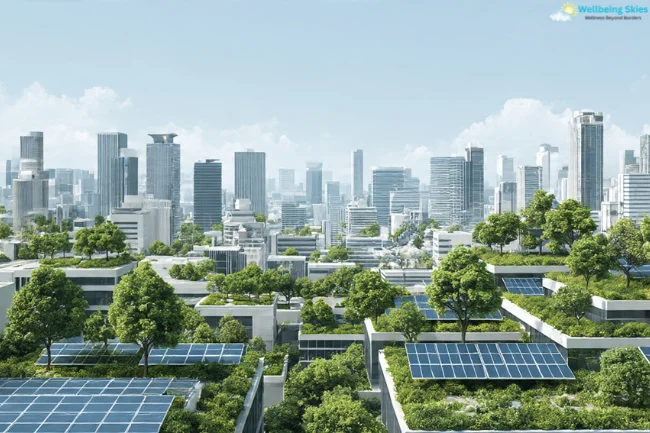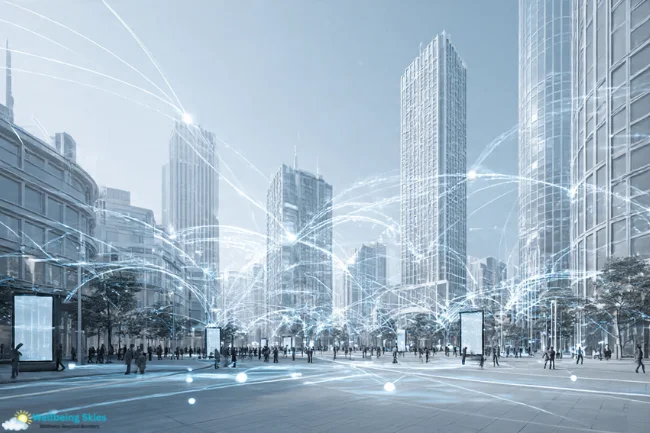As cities grow denser and more complex, the need for smarter, greener, and more livable spaces becomes essential. Axurbain represents a transformative approach to urban planning — one that blends technology, sustainability, and human-centered design to ensure amenities, jobs, and homes are close together, integrating daily life and reducing sprawl. Instead of viewing cities as concrete jungles, Axurbain envisions them as living ecosystems where innovation and nature coexist in balance.
What Makes Axurbain Different from Traditional Urban Design?
Traditional city planning often focused on infrastructure and expansion — building more roads, higher towers, and bigger systems. Axurbain, however, shifts the focus toward integration. It emphasizes collaboration between architecture, technology, and sustainability to create spaces that not only serve people while simultaneously cultivating a strong sense of environmental stewardship among inhabitants.
The heart of Axurbain’s philosophy lies in smart design — using data, renewable energy, and eco-conscious materials to make cities more efficient and inclusive. Whether it’s reducing carbon footprints or improving accessibility, every decision under the Axurbain model is intentional and people-focused.
Global Examples of Smart Design That Reflect the Axurbain Vision
To understand Axurbain’s impact, we can look at several real-world examples where creativity and innovation have redefined city life.
Bosco Verticale, Milan
In Milan, the Bosco Verticale (Vertical Forest) embodies the essence of green architecture. The twin towers are covered with thousands of trees and plants, absorbing CO₂ while improving air quality. This design not only enhances aesthetics but also promotes biodiversity in a dense urban setting — a principle central to the Axurbain philosophy.
Gardens by the Bay, Singapore
Singapore’s Gardens by the Bay shows how technology and sustainability can coexist beautifully. Its futuristic Supertrees act as vertical gardens, collecting rainwater and generating solar energy. These innovations align perfectly with Axurbain’s goal: designing spaces that serve both ecological and human needs.
The High Line, New York City
In New York, the High Line transformed an abandoned elevated railway into a public greenway that promotes community interaction and ecological awareness. This project mirrors Axurbain’s human-centered vision by reclaiming unused infrastructure to create shared, inclusive spaces for people to connect.
The Benefits of Axurbain’s Smart Design Approach
1. Sustainability at the Core
At its foundation, Axurbain emphasizes environmental responsibility. By integrating green roofs, energy-efficient materials, and smart resource management, cities can significantly reduce their ecological impact. Sustainable design not only helps combat climate change but also enhances the quality of urban life.
2. Greater Accessibility and Inclusivity
Smart design isn’t just about technology — it’s about people. Under the Axurbain framework, accessibility is a priority. Well-planned public transport systems, pedestrian-friendly walkways, and inclusive spaces ensure that every resident, regardless of ability, can move freely and participate in city life.
3. Economic and Social Growth
When cities are designed thoughtfully, they thrive. Vibrant, attractive spaces draw in businesses, residents, and tourists alike. The economic ripple effect of Axurbain-inspired developments includes higher property values, stronger local economies, and job creation within green industries.
4. Safety and Well-Being
Smart urban design also improves safety. Features like better lighting, open public areas, and sensor-based monitoring systems make cities safer while fostering community engagement. This creates a sense of belonging — something that’s often missing in large, impersonal urban environments.
Challenges in Bringing the Axurbain Vision to Life
While the benefits are clear, implementing Axurbain’s smart design principles comes with real-world challenges.
Funding and Policy Barriers
Building sustainable infrastructure requires investment. Many cities face limited budgets or conflicting priorities, making large-scale innovation difficult. Collaboration between public and private entities is crucial for overcoming this investment shortfall.
Community Participation
For Axurbain-style projects to succeed, residents must be part of the process. Engaging communities early ensures that designs meet their actual needs — not just what developers think they need. But balancing diverse opinions is often easier said than done.
Regulations and Red Tape
Zoning laws, outdated building codes, and bureaucratic delays can hinder progress. Cities embracing Axurbain’s ideas must rethink these frameworks to allow creativity and flexibility in urban planning.
The Role of Technology in the Axurbain Movement
Technology is the backbone of Axurbain’s success. From Internet of Things (IoT) sensors that monitor air quality to data analytics that improve traffic flow, digital innovation makes cities more responsive and efficient.
Smart materials like self-healing concrete and adaptive glass extend the life of infrastructure while cutting maintenance costs. Meanwhile, mobile apps connect citizens directly with city services — from public transport updates to energy usage data — giving residents real-time control and awareness.
In Axurbain’s world, technology doesn’t replace human interaction; it enhances it. The goal is to create cities that listen and respond to their inhabitants’ needs.
A Real-World Case Study: The High Line’s Axurbain Spirit
The High Line in New York perfectly represents the Axurbain mindset. What was once industrial waste is now a thriving, sustainable space where locals and visitors can relax, walk, and connect with nature. It boosts nearby business revenue, encourages tourism, and strengthens community identity. This kind of reimagination is what makes the Axurbain model so powerful — it turns forgotten structures into opportunities for social and environmental renewal.
The Future of Cities with Axurbain
The future of urban living lies in collaboration — between planners, architects, technologists, and residents. Axurbain shows that when sustainability meets innovation, cities become more than places to live; they become experiences.
As communities adopt smarter, greener designs, we’re witnessing the birth of cities that adapt, evolve, and prioritize both human and ecological well-being. Whether through eco-buildings in Milan or tech-integrated parks in Singapore, the Axurbain vision is already reshaping the global landscape.
Conclusion: Building a Smarter Tomorrow
Axurbain isn’t just an architectural trend — it’s a movement toward human-centered progress. By fusing sustainability, technology, and creativity, it offers a blueprint for cities that thrive in every sense. The time to rethink urban life is now. As citizens, policymakers, and innovators, we all play a part in bringing the Axurbain vision to life — one thoughtfully designed, eco-friendly project after another.
Learn about Pyntekvister
I’m Salman Khayam, founder and editor of this blog, with 10 years of experience in Travel, Lifestyle, and Culture. I share expert tips on Destinations, Hotels, Food, Fashion, Health, and more to help you explore and elevate your lifestyle.



